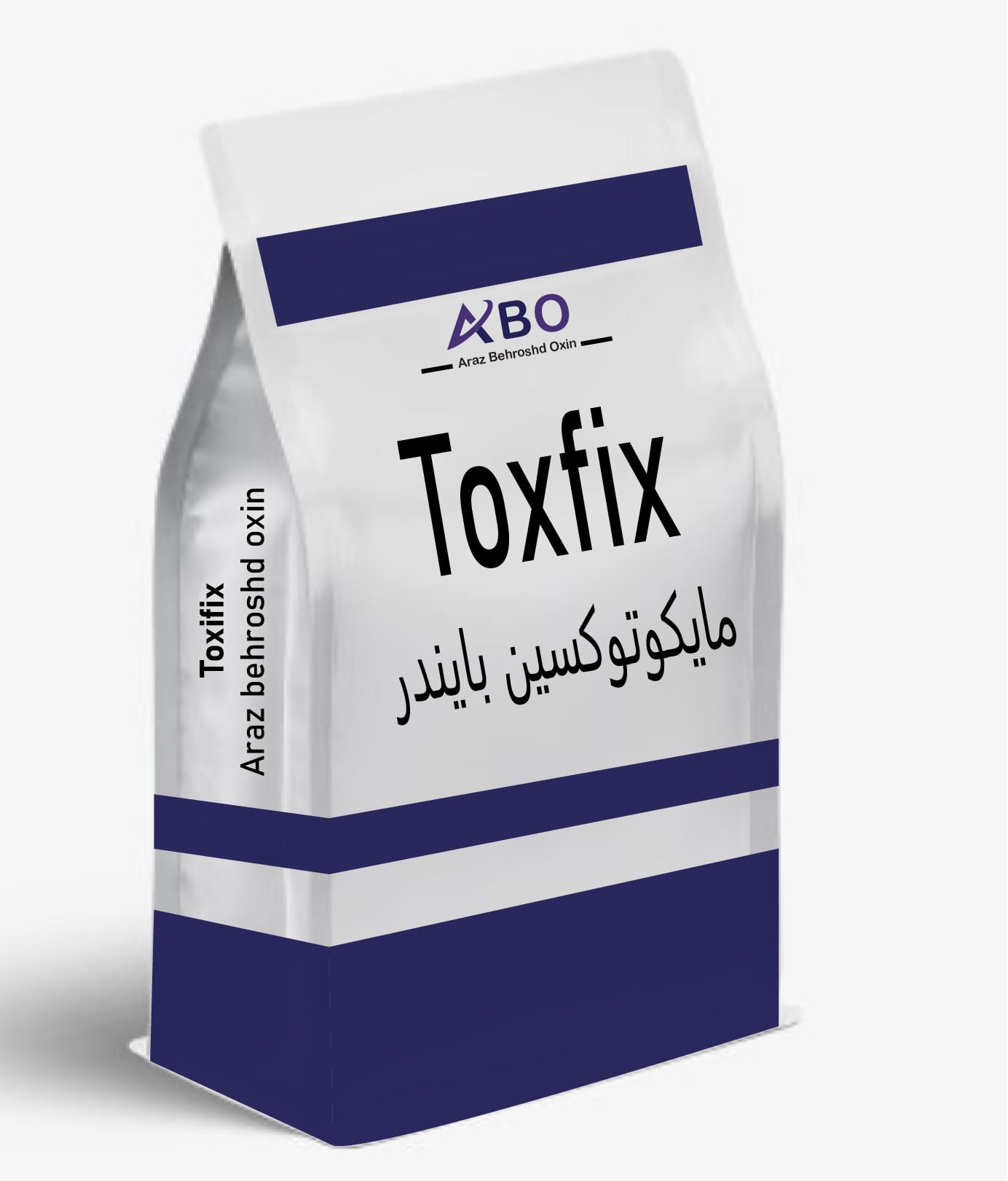
Mycotoxin binder
Mycotoxin Binders and Protection of Living Organisms
Mycotoxins are considered a potential risk to human and animal health. Feed contaminated with mycotoxins can cause serious disorders and diseases in livestock and consequently endanger human health. Also, contamination of agricultural products with mycotoxins causes great economic losses in the food, livestock and agricultural industries.
Detoxification methods
Different physical and chemical detoxification methods have been used to combat mycotoxins. However, few of them have practical application. One of the new and promising approaches to protect living organisms and improve the quality of food and livestock against the harmful effects of mycotoxins is the use of substances called:
Mycotoxin binders and Mycotoxin modifiers.
1) Mycotoxin binders are substances that are added to the animal diet in order to reduce the absorption of mycotoxins from the digestive tract and their distribution to the blood and target organs.
2) Mycotoxin modifiers are also substances that act by surface binding by breaking down or by transforming mycotoxins and converting them into non-toxic metabolites.
Here, the most important types of Mycotoxin Binders and Mycotoxin Modifiers, their mechanism of action and application to deal with different types of mycotoxins are reviewed.
1) Mycotoxin binders
Aluminosilicate
Compositions of Mycotoxin binders (clay) The largest group of mineral aluminosilicates, which is the largest group of mycotoxin binders. Montmorillonite clay
In particular, bentonite clay, can be added to animal feed in the form of granules, powders, pellets, etc., provided that the clay is able to contact the mycotoxin-contaminated feed (e.g. aflatoxin) in the animal’s digestive tract (e.g. stomach) for sufficient absorption or surface adsorption of the mycotoxins.
Activated carbon
Another mineral of interest is activated charcoal, also called activated carbon (AC), which is an insoluble powdered activated carbon formed by the thermal decomposition of several organic compounds.
Organic binders
The most commonly used biological mycotoxin binders are components of the yeast Saccharomyces cerevisiae. By using only the yeast cell walls (consisting of β-glucan and mannan oligosaccharides) instead of the entire cell, mycotoxin binding can be increased.
2) Mycotoxin modifiers
Bacteria
Mycotoxin-degrading bacteria have been isolated from various organs, including the rumen and microflora of the intestine, soil, and even water.
Yeast
Yeasts have been studied for their ability to degrade mycotoxins, with yeasts being able to modify the form of mycotoxins and convert them into non-toxic metabolites.
Fungi
Fungi not only produce mycotoxins, some of them are also able to degrade them by producing extracellular enzymes.
Enzymes
An interesting option for using live microbes to combat mycotoxins in animal feed is the use of enzymes responsible for the degradation of mycotoxins. Enzymatic detoxification reactions offer specific, often irreversible, effective and environmentally friendly methods that do not leave toxic residues and unwanted by-products. These mycotoxin-degrading enzymes are primarily produced by microorganisms.
Benefits of using mycotoxin binder
Poultry
Increase production and productivity
Improve performance
Increase fertility and improve hatchability in mother flocks
Improve eggshell quality
Reduce metabolic diseases
Strengthen and improve the immune system
Reduce medical costs
Improve the effectiveness of vaccination and antibiotic therapy
Reduce the persistence of toxins in eggs and meat
Livestock
Improve the quality of milk produced
Reduce the persistence of toxins in milk
Reduce fertility problems and mycotic abortions in dairy cows
Change the microbial population of the rumen
Improve the digestibility of food
Aquatic animals
Increase the productivity of breeders
Increase survival
Reduce mutations and abnormalities
Reduce stress on the liver and kidneys
TOXFIX is a suitable additive during the pelleting process and also for use in livestock water tanks Poultry and aquatic animals. It has anti-toxin activity both in the body of livestock, poultry and aquatic animals and in their feed.
Packaging
Our probiotic product is presented in a variety of convenient and easy-to-use packaging. These packaging are designed to prevent moisture and contamination.
Conclusion
Various strategies have been developed to reduce mycotoxin contamination, which can suppress, increase the excretion of mycocins or change their function. Biological methods are a relatively new method that not only does not affect the nutritional value, but is also an efficient and environmentally friendly method.
For more information and advice on how to use, please contact us or visit our website.
Categorised in: Products


